In communities across the globe, inequitable policing practices have eroded public trust and challenged the legitimacy of local law enforcement agencies. As a result, many seek new ways to improve their relationship with the communities they serve. The larger reform efforts are helping law enforcement agencies improve transparency and demonstrate accountable police policies. At the same time, agencies are also engaging the community more deeply and using their feedback to drive policing priorities and enforcement policies. Police Transparency is typically implemented by law enforcement agencies that want to increase transparency, grow public trust and improve relationships with the communities they serve.
The Police Transparency solution can be used by law enforcement agencies to deliver a set of capabilities that help share information openly with the public, promote your agency’s work, demonstrate accountability when force is used, illustrate workforce recruiting reflects the diversity of the community and engage the public to improve policing services and solve problems.
Promote your agency’s work
The Police Transparency solution leverages an ArcGIS Hub site to promote transparency efforts. The site includes a responsive and accessible website that serves as a destination for key focus areas, for example, community engagement, workforce diversity, crime stats, and use of force.
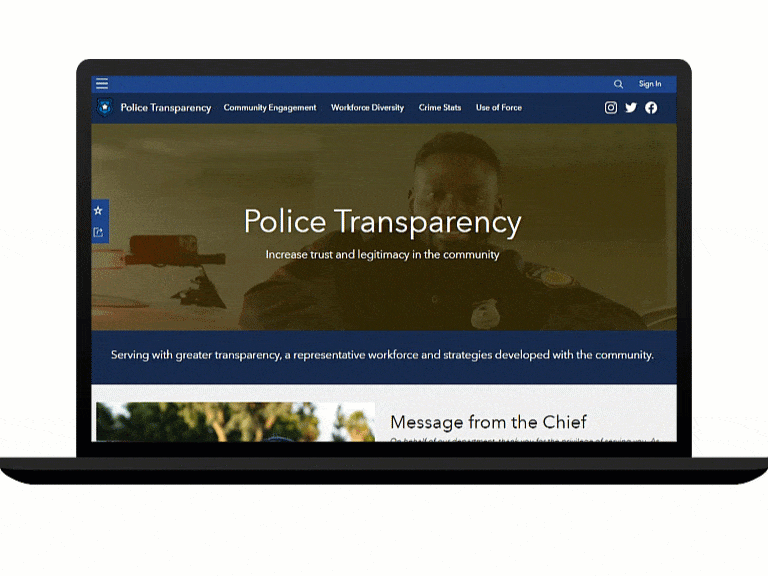
Engage the community
To deliver the equitable, high quality service required to improve public trust and legitimacy, law enforcement agencies have an obligation to find new ways to understand and respond to community needs. Effective community engagement strategies leverage technology to enable residents and stakeholders to be heard, get involved, and collaborate with police and fellow citizens for solutions to community problems.
The Police Transparency solution helps law enforcement agencies improve their ability to engage their communities by helping the public find and connect the community policing officer in their neighborhood, provide feedback on an interaction with an officer or police employee, and, with Hub Premium, discover and sign-up for community policing events.
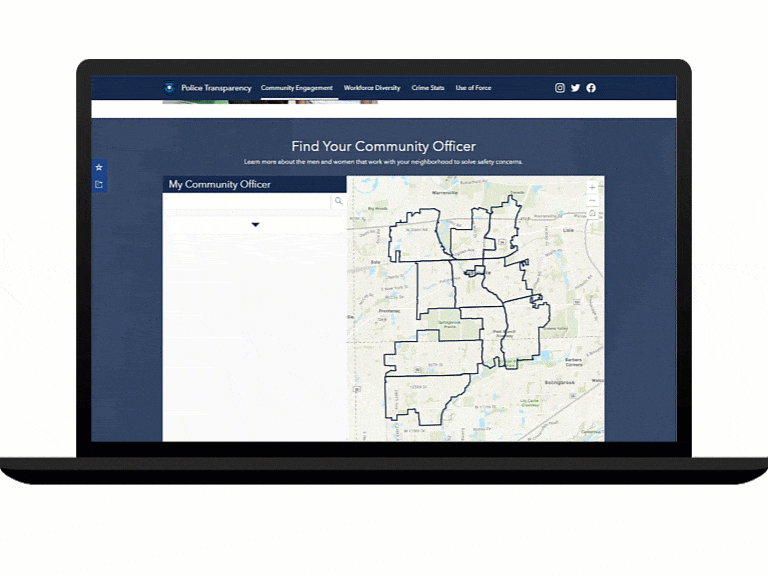
Police Transparency also helps police work with the community to identify and solve crime problems. The Community Crime Problem Reporter can be used by the public to submit information about crime problems in their community. Next, the Community Crime Problem Manager can be used by Community Policing Officers to capture data on a community crime problem-solving project as it proceeds through the SARA problem-solving model. Finally, the Community Crime Problem Dashboard can be used by the public to monitor the status and outcomes of community crime problem-solving projects.
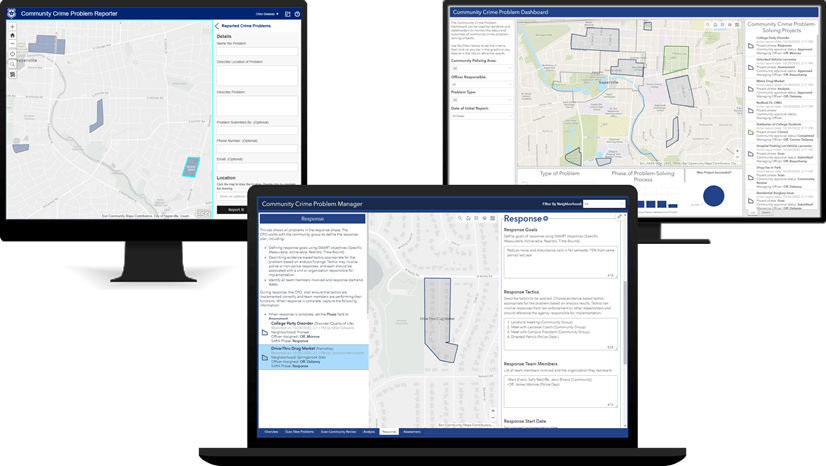
Illustrate workforce diversity
At many law enforcement agencies, rebuilding trust and legitimacy includes a goal to recruit a diverse workforce that reflects the community it serves. Transparent reporting of workforce demography and recruitment initiatives along with monitoring tools for community members helps law enforcement agencies maintain accountability and demonstrate they are meeting established goals.
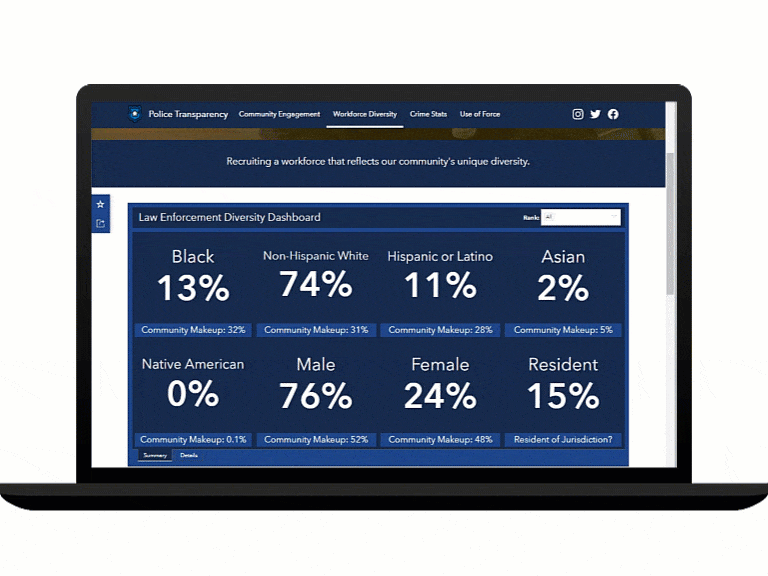
The Law Enforcement Diversity Dashboard can used by the public to understand the racial, ethnic, and gender diversity of their police force in relation to the composition of the community. Visualize key workforce diversity metrics for the entire agency workforce or rank, compare to the makeup of the community, and understand how workforce diversity may be improving over time.
Share crime conditions
Crime prevention is an essential function every law enforcement agency provides to their community. Prevention strategies are driven by problems identified through analysis of crime data. Law enforcement agencies have also faced criticism that certain strategies and tactics have resulted in inequitable treatment of communities of color. In order to rebuild trust, law enforcement agencies can enable communities to exercise stronger oversight of policing practices through transparency about the crime conditions police are observing, the problems they are responding to, and the prevention and reduction strategies and tactics they employ.
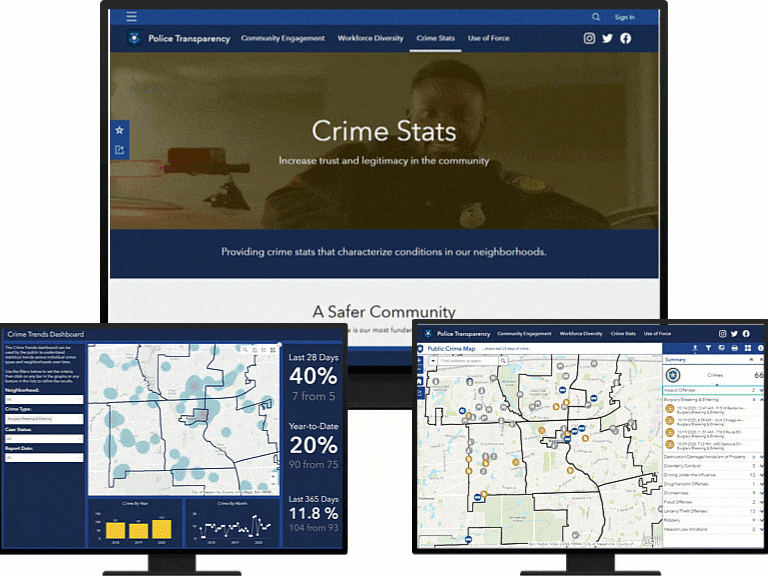
The Police Transparency solution includes a Crime Summary Dashboard that can be used by the public to explore statistical trends across major crime categories, a Crime Trends Dashboard to explore statistical trends and hotspots across individual crime types, and a Public Crime Map to explore recent crime conditions in the community and create reports for an area of interest. All three apps follow the Federal Bureau of Investigation (FBI) National Incident-Based Reporting System (NIBRS) standards – the new United States standard for crime reporting as of January 2021.
Understand use of force
To demonstrate a commitment to transparent community oversight, law enforcement agencies are increasingly sharing information about use of force with the general public. Providing access to this information enables community members and stakeholders to hold law enforcement agencies accountable and to justify concerns based on data. Additionally, agencies can educate community members to holistically understand the topic of use of force, from how frequently force is used, to the practices and policies that govern its’ application, and its impacts upon neighborhoods and community members.
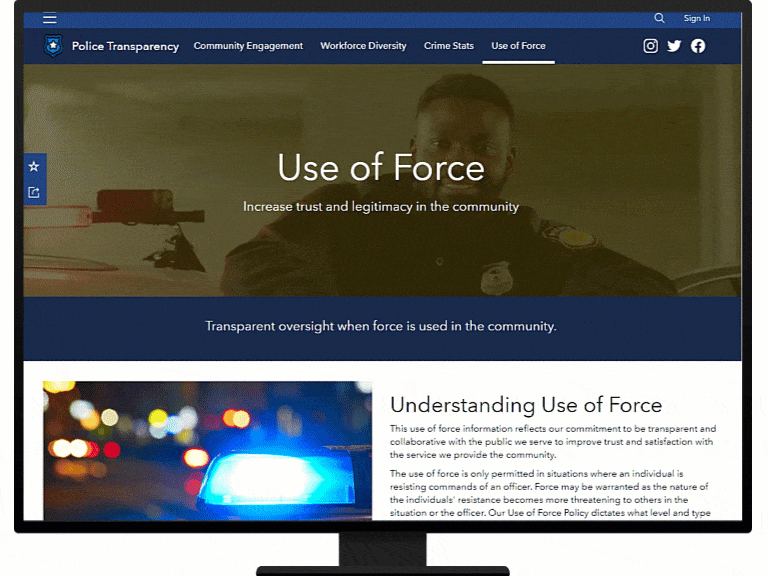
Police Transparency includes a destination with charts and dashboards to help explain why and how often law enforcement agencies use force, understand organizational policies around use of force, racial and ethnic disparities in its’ application, and explore the characteristics of neighborhoods, subjects, and officers involved. The solution helps law enforcement agencies enable their community members with the contextual knowledge and analytical tools to provide informed oversight.
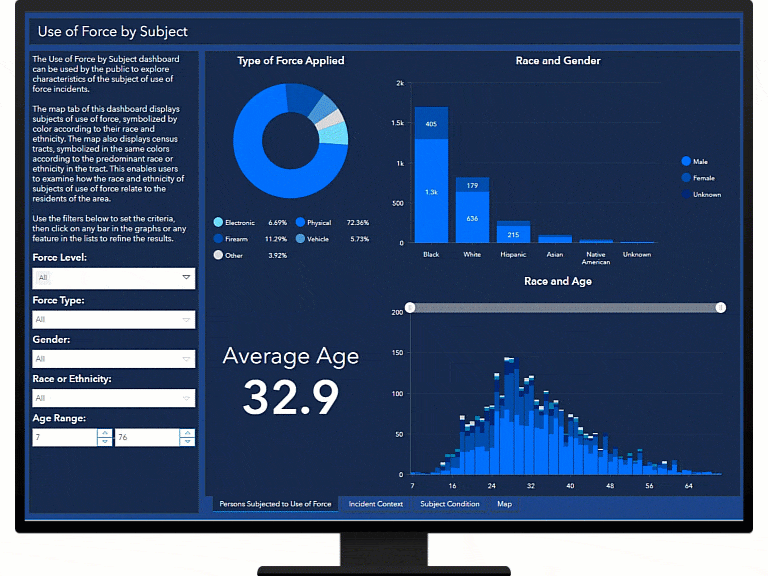
Additional resources
Learn more about Police Transparency and how you can quickly deploy this solution on the ArcGIS Solutions site. For questions and feedback, chat with us on GeoNet or contact Esri Support Services.
Finally, Esri is providing several resources to help organizations address racial inequities. The Racial Equity GIS Hub is the place to access additional resources and to request GIS assistance from Esri.

Article Discussion: